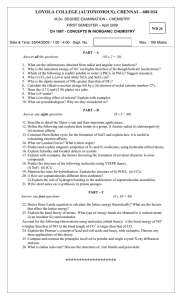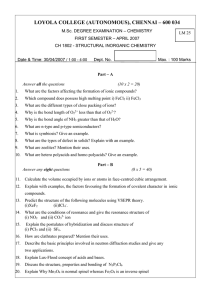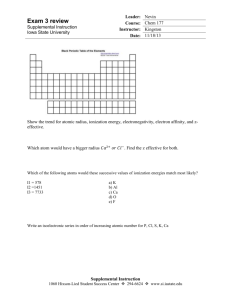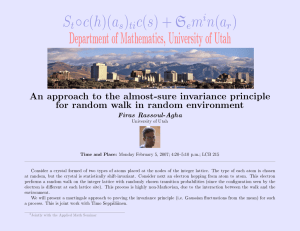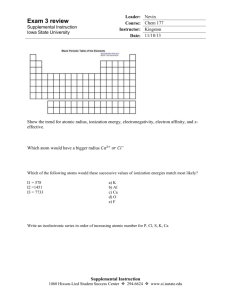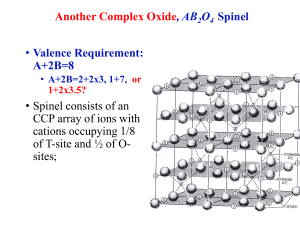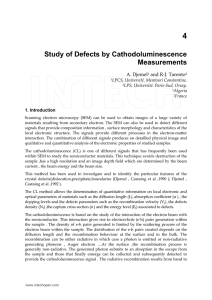LOYOLA COLLEGE (AUTONOMOUS), CHENNAI – 600 034
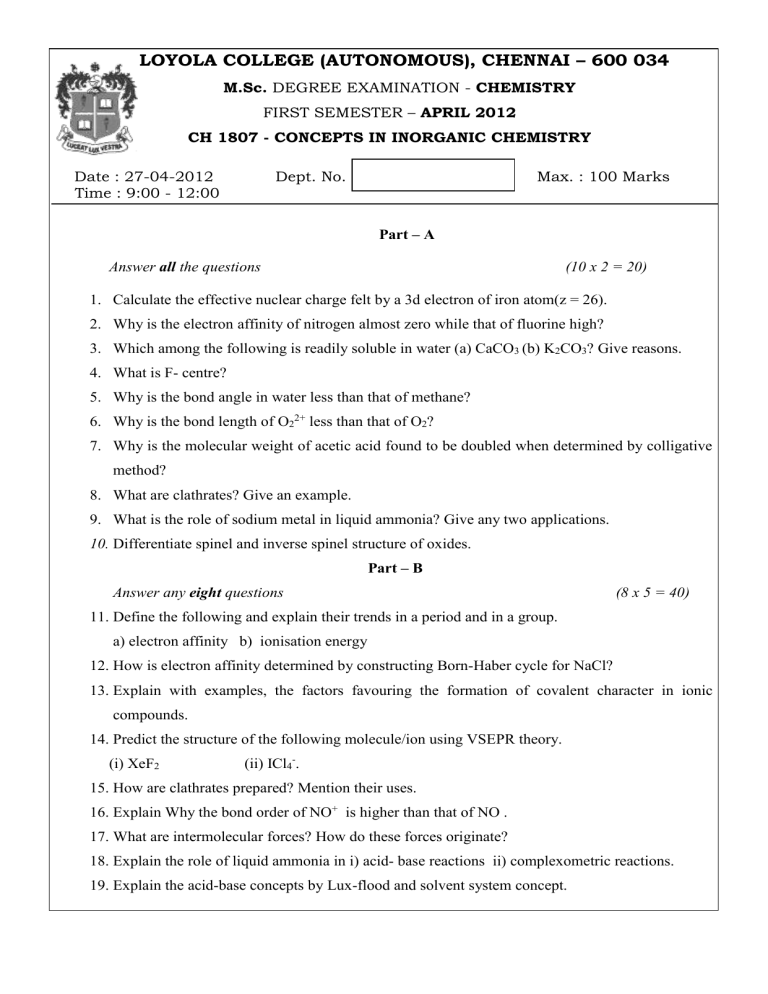
LOYOLA COLLEGE (AUTONOMOUS), CHENNAI – 600 034
M.Sc. DEGREE EXAMINATION - CHEMISTRY
FIRST SEMESTER – APRIL 2012
CH 1807 - CONCEPTS IN INORGANIC CHEMISTRY
Date : 27-04-2012 Dept. No. Max. : 100 Marks
Time : 9:00 - 12:00
Part – A
Answer all the questions (10 x 2 = 20)
1.
Calculate the effective nuclear charge felt by a 3d electron of iron atom(z = 26).
2.
Why is the electron affinity of nitrogen almost zero while that of fluorine high?
3.
Which among the following is readily soluble in water (a) CaCO
3
(b) K
2
CO
3
? Give reasons.
4.
What is F- centre?
5.
Why is the bond angle in water less than that of methane?
6.
Why is the bond length of O
2
2+
less than that of O
2
?
7.
Why is the molecular weight of acetic acid found to be doubled when determined by colligative method?
8.
What are clathrates? Give an example.
9.
What is the role of sodium metal in liquid ammonia? Give any two applications.
10.
Differentiate spinel and inverse spinel structure of oxides.
Part – B
Answer any eight questions
11.
Define the following and explain their trends in a period and in a group.
(8 x 5 = 40) a) electron affinity b) ionisation energy
12.
How is electron affinity determined by constructing Born-Haber cycle for NaCl?
13.
Explain with examples, the factors favouring the formation of covalent character in ionic compounds.
14.
Predict the structure of the following molecule/ion using VSEPR theory.
(i) XeF
2
(ii) ICl
4
.
15.
How are clathrates prepared? Mention their uses.
16.
Explain Why the bond order of NO + is higher than that of NO .
17.
What are intermolecular forces? How do these forces originate?
18.
Explain the role of liquid ammonia in i) acid- base reactions ii) complexometric reactions.
19.
Explain the acid-base concepts by Lux-flood and solvent system concept.
20.
What are Miller indices? Sketch the planes in a cube with Miller indices a) 111 b) 110 c) 112 d) 312
21.
Describe the three types of cubic unit cell among the Bravais lattices. Calculate the number of atoms per unit cell in each case.
22.
What is radius ratio rule? Discuss the structure of zinc blende.
Part – C
Answer any four questions (4 x 10 = 40)
23.
How is lattice energy calculated theoretically? What are the factors that affect lattice energy?
24.
Discuss in detail the following types of defects in crystals. a) Schotky defects b)Frenkel defects c) metal deficiency defect d) metal excess defect.
25.
Explain the magnetic property of CO is diamagnetic using M.O theory.
26.
Explain the band theory of metals. How does this theory explain the conductance behaviour of metals?
27.
Explain the Pearson’s concept of hard and soft acids and bases, with examples. Discuss any three applications of this theory.
28.
Describe the basic principles involved in X-ray diffraction studies.
**************

